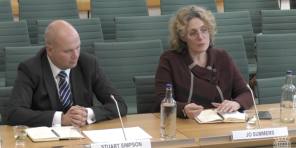

The opportunity for an estate to benefit from a reduced rate of inheritance tax where the deceased left a charitable legacy was introduced in April 2012.
HM Revenue & Customs’ most recent figures show that £39m of IHT was saved using this relief on the estates of those who died in 2015-16, with just under 9 per cent of taxable estates benefiting from the relief.
Summary
The 36 per cent rate is available where 10 per cent of the net estate is left to charity. Importantly, the 10 per cent threshold relates to a component of the estate.
There are three components:
- Survivorship component – assets held as joint tenants that automatically pass to the survivor.
- Settled property component – the value of trust assets that fall into the deceased’s estate; for example, where the deceased was life tenant. The trust deed will determine the destination of the assets.
- General component – the free estate, being assets that are directed by will.
The charitable legacy must be at least 10 per cent of the component’s baseline amount in order for the component to qualify for the reduced 36 per cent rate of IHT.
It is possible to merge two or more components to achieve the 10 per cent threshold.
Baseline amount
There are three steps to calculating the baseline amount:
- Calculate the value of the component at date of death, less exempt gifts.
- Deduct the available nil-rate band. This includes any available transferable NRB and is reduced by failed gifts. However, the residential NRB cannot be deducted here. Where more than one component is held the NRB will be split proportionately unless the will directs otherwise.
- Add the charitable legacy back in to establish the baseline amount.
A simplified example is provided in Box 1.
HMRC provides a calculator that will work out the baseline amount, available online at www.gov.uk/inheritance-tax-reduced-rate-calculator.
Tipping points
Where a will leaves a charitable legacy, every 1 percentage point increase between 4 per cent and 10 per cent will cost the beneficiaries 0.6 per cent, where they are otherwise paying 40 per cent IHT on it. At 10 per cent they effectively recoup 10 per cent of the IHT paid on their full residual legacy.
Increasing a charitable legacy from 4 per cent to 10 per cent results in the beneficiaries receiving the same net amount.
The charity will benefit in preference to HMRC. This means that where a charitable legacy falls short of the 10 per cent test but exceeds 4 per cent, the beneficiaries varying some of their interest in favour of charity results in both those parties seeing an increase to their legacy, to the detriment of HMRC.
These tipping points are demonstrated in Table 1, using a baseline amount of £100,000 and assuming no NRB/RNRB available.
Table 1: Tipping points
Charitable legacy (%) | Charitable legacy (£) | Beneficiaries’ gross legacy (£) | IHT due (£) | Beneficiaries’ net legacy (£) |
0 | 0 | 100,000 | 40,000 | 60,000 |
2 | 2,000 | 98,000 | 39,200 | 58,800 |
4 | 4,000 | 96,000 | 38,400 | 57,600 |
6 | 6,000 | 94,000 | 37,600 | 56,400 |
8 | 8,000 | 92,000 | 36,800 | 55,200 |
10 | 10,000 | 90,000 | 32,400 | 57,600 |
Source: Hargreaves Lansdown. Copyright: Money Management
Maximising the benefit
Beneficiaries of both the survivorship and general component could choose to vary part or all of their legacy. If varied in favour of a charity, this could result in the 10 per cent test being met and the remaining beneficiaries benefiting from the 36 per cent rate. It is not possible to vary the beneficiaries of the settled property component because the beneficiaries are not determined by the deceased’s will.
Components can be merged when assessing the baseline amount and applying the reduced rate. This might be beneficial where a legacy comfortably exceeds the 10 per cent threshold, and merging allows the other components to apply the reduced rate. See Box 2 for an example.
Planning points
Where someone wants to gift to charity, and for their estate to benefit from the reduced rate, their will needs to be appropriately drafted. Since the baseline amount is calculated with reference to values on the date of death, specifying a monetary charitable legacy will risk the 10 per cent threshold not being met. It is best to qualify rather than quantify the amount left to charity to account for values changing over time. HMRC provides example wording in IHTM45008.
Variation should be seen as a last resort – it increases the costs and administration of the estate and relies on all beneficiaries being willing and able to agree to any variation.
Where a charitable legacy exceeds 10 per cent of one component, the personal representatives should be alerted to the potential for an election to merge components in order to maximise the benefit of the 36 per cent rate.
Whether it is better from a tax perspective to gift in lifetime or on death will depend on the individual circumstances of each case. Lifetime gifts to charity will benefit from income tax relief. This may or may not be more tax-efficient than making the charitable gift by will for the remaining beneficiaries to qualify for the 36 per cent reduced rate.
As with a lot of financial planning, having the conversation earlier tends to keep more options open.
Victoria Harman is senior technical expert at Hargreaves Lansdown



